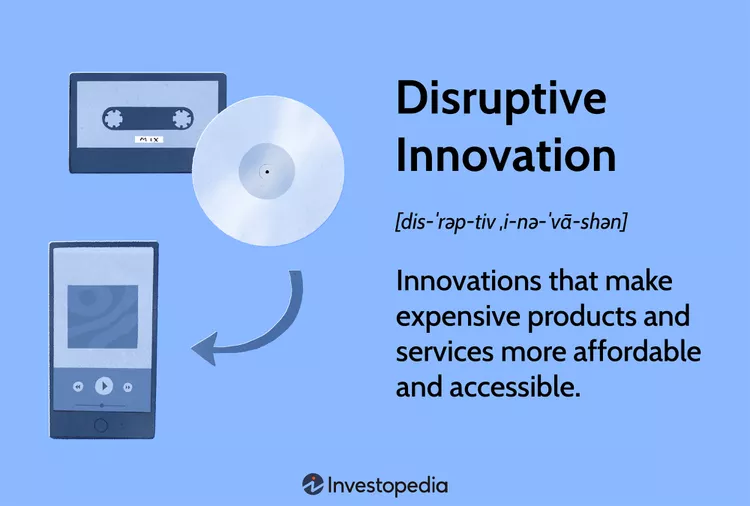Disruptive Innovation
What is Disruptive Innovation?
Definition:
“Disruptive Innovation” refers to the introduction of new technologies, products, or business models that significantly alter and reshape existing markets. Coined by Clayton Christensen, disruptive innovation typically starts in niche markets and eventually disrupts established industries by offering simpler, more convenient, and often more affordable alternatives. This form of innovation challenges traditional business models, forcing companies to adapt or risk becoming obsolete.
Analogy:
Imagine disruptive innovation as the introduction of smartphones, which transformed the mobile phone market. Just as smartphones disrupted the traditional mobile phone industry by offering a multipurpose device with advanced features, disruptive innovation revolutionizes markets by providing a novel approach that fundamentally changes how products or services are perceived and consumed.
Further Description:
Disruptive innovation involves key characteristics:
Market Entry: Disruptive innovations often enter the market in niche segments, targeting underserved or overlooked customer needs.
Simplicity and Accessibility: Disruptive products or services are typically simpler, more accessible, and user-friendly, making them attractive to a broader audience.
Lower Costs: They often come with lower price points, appealing to customers who are price-sensitive or seeking more value for their money.
Market Transformation: Over time, disruptive innovations transform the market landscape, challenging established players and reshaping industry dynamics.
Adaptability: Companies that successfully navigate disruptive innovation are adaptable and open to embracing new technologies and business models.
Why is Disruptive Innovation Important?
Market Evolution: Disruptive innovation drives market evolution by introducing novel solutions that push industries to evolve, adopt new technologies, and improve efficiency.
Consumer Empowerment: It empowers consumers by providing them with more choices, often at lower costs, and encourages competition, leading to improved products and services.
Business Survival: Embracing disruptive innovation is crucial for business survival. Companies that fail to adapt risk becoming obsolete as competitors leverage innovative solutions to gain a competitive edge.
Economic Growth: Disruptive innovations stimulate economic growth by creating new markets, generating employment opportunities, and fostering a culture of innovation.
Global Impact: Disruptive innovations can have a global impact, influencing how societies and economies operate, communicate, and interact.
Examples and Usage:
Uber: Uber disrupted the traditional taxi industry by introducing a convenient and cost-effective ride-sharing service, leveraging technology to connect drivers and passengers.
Netflix: Netflix revolutionized the entertainment industry by introducing a streaming model that challenged traditional cable TV and DVD rental services.
Tesla: Tesla disrupted the automotive industry by popularizing electric vehicles, integrating advanced technology, and challenging the traditional dealership model.
Key Takeaways:
- Disruptive innovations often start in niche markets before expanding their reach.
- They are characterized by simplicity, accessibility, and user-friendly features.
- Disruptive innovations often come with lower price points, appealing to price-sensitive consumers.
- Over time, disruptive innovations transform market landscapes, challenging established players.
- Successful navigation of disruptive innovation requires adaptability and openness to new technologies and business models.





